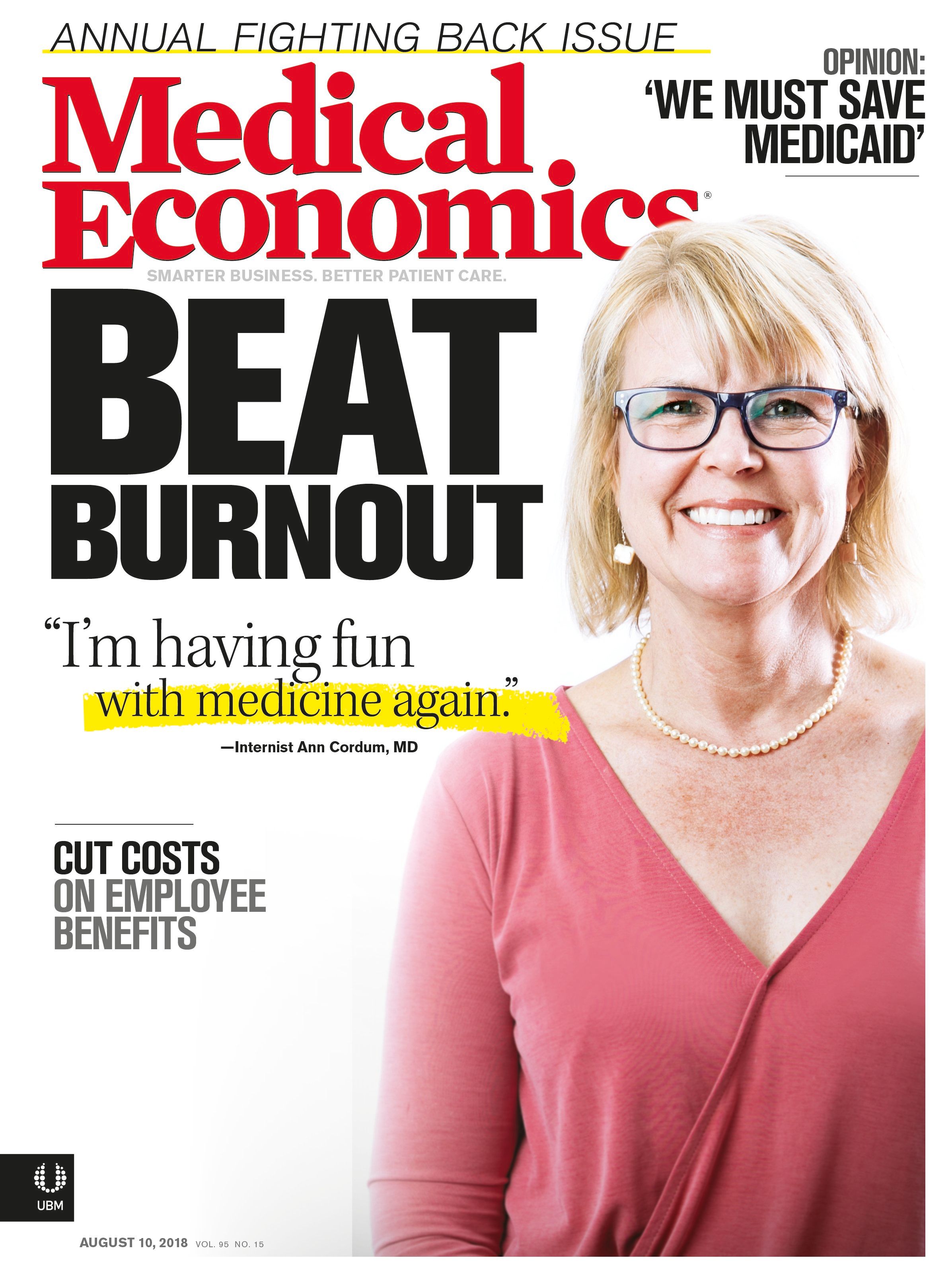Publication
Article
Medical Economics Journal
Manage practice workflow to reduce burnout
Author(s):
Learn to delegate responsibly to help ease pressure on physicians.
C. Nicole Swiner, MD, has worked hard to create a better work-life balance for herself. She transitioned from a hospital-owned clinic to private practice eight years ago and now is one of two physicians at Durham Family Medicine in Durham, N.C. She knows that devising best practices and strategies before they’re needed can go a long way toward keeping the “flow” in “workflow.”
Here’s how to strengthen organizational workflow within a practice to make sure everything isn’t always the physician’s responsibility-a surefire set-up for burnout.
Maximize staff capabilities
The best thing she’s done to improve her sanity is to hire someone who functions like a scribe, says Swiner. “I should have done it sooner. Now I focus less on note-taking and finishing and more on being able to listen to my patients instead of staring at the computer.”
She knows time is money. “Now it takes me 15 minutes to do 15 to 20 notes,” she says. “Paying a premed or grad student to scribe gives me time to see two to three extra patients in a day. They gain knowledge by working with me, and we both win.”
Ideally, everyone works to maximal capabilities and training, says Swiner, who also works with her LPNs and medical assistants so they understand her organizational structure and can support her at “full capacity,” meaning they can rise to the ever-changing list of tasks that occur in the practice every day.”The fewer phone calls and less paperwork I have, the better my life is,” she says.
Her ingenuity helps keep burnout at bay.
Leading contributors to the pervasive problem include increasing administrative and documentation burdens, and the pressure to do more with fewer resources, says Nisha Mehta, MD, a radiologist based in Charlotte, N.C., who writes and speaks about physician burnout.
“To address this, practices need to take a sincere look at workflow, identify areas where other members of the healthcare team or staff can help, and then devote resources and training to make this possible,” Mehta says.
Collaborate with the practice manager
“The first thing physicians sometimes need to understand is how to ask for help,” says Kenneth T. Hertz, FACMPE, principal consultant for the Medical Group Management Association Health Care Consulting Group. “Remember, too, that there isn’t always one solution, i.e., ‘If you do this, everything will be fine.’”
Enter the practice manager, who can help build teams “to pull people together to solve problems,” says Hertz. “This requires collaborative effort, knowing you can’t solve everything by yourself. Practice managers really can help when we’re able to analyze things from the outside, without being in the middle of them.”
Be clear about expectations
Make work performance expectations very clear, up front, Hertz says. “For example, say to your trusted nurse, ‘When I come into the exam room, please have this and this laid out for me. And check the chart to make sure lab and X-ray results are back.’”
In addition to the nurse, the receptionist is just one staff member who may see patients before the physician and should process them quickly, says Hertz. Checking them in and obtaining their medical files, confirming current insurance, address, phone, and emergency contact efficiently prepares them for the next steps.
“Then [the patient is] ready to be seen so the doctor can walk into the exam room and do his or her job. Everyone needs to accept responsibility for their little piece and to know that everyone succeeds or fails as a team,” he says.
Create a positive culture
Remember to recognize good work, says Hertz. “You can do this when you praise your staff. It’s especially powerful from the doctor, who might say, ‘Thank you, it was a great day today.’ The employee on the receiving end walks on air for the next two weeks and now wants to continue to rise to the occasion on the job.”
Be patient with staff, since sometimes, practices can be quick to let valued staff members go for reasons that aren’t so well thought out, says Mehta. She suggests that maybe it’s ultimately beneficial not to focus on the “small stuff,” but to appreciate the broader contributions a seasoned staff member makes to the practice workflow.
“Focus on the retention and satisfaction of valuable, well-trained staff so that you’re not wasting time, money, and effort on recruitment and training of new members,” Mehta says. Think about creating efficiency in the practice-then preserving it.”
Acknowledge that just as the physician has a life away from work, so do staff members, says Hertz. Try to be empathetic and flexible when the biller, who may also have a husband and two children, reports that one child is really sick and asks for time-off consideration.
Say goodbye to difficult patients
Workflow is also better without problematic patients, so don’t hesitate to make necessary changes, says Swiner.
“Taking that action is appropriate when patients are late, cancelling or no-showing, not taking medications correctly, or being belligerent with staff. You have every right to ask them to find someone who suits them better,” she says.
This tactic can result in immediate benefits, says Swiner, for both doctor and patient.
“I’m much less stressed when I look at the schedule and don’t see as many patients that give me heartburn. And it may be healthier for both of you,” she says.






